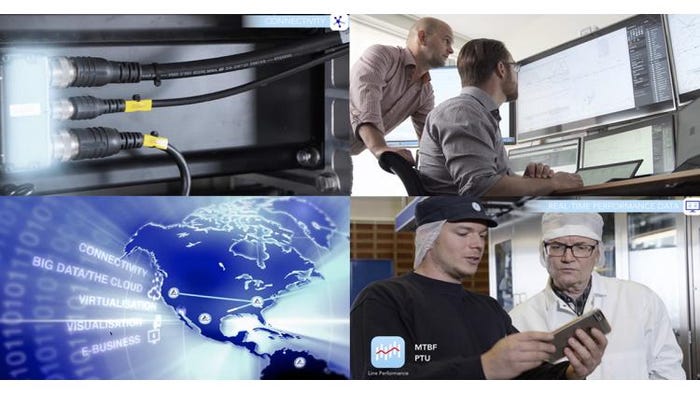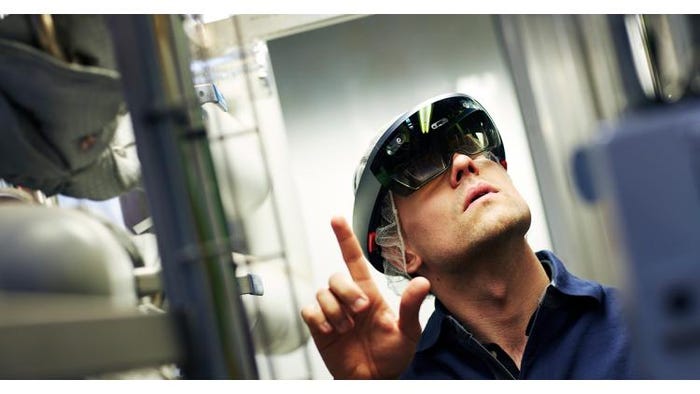Using Microsoft advanced digital technology, service technicians from Tetra Pak were able to cut downtime on 17 food packaging lines, during a six-month trial, by up to 48 hours for each line. That’s two extra days of production for its customers by preventing failures and by quickly resolving packaging machinery stoppages to return the line to uptime status.
Tetra Pak has invested in two Microsoft technologies to deliver these improvements (watch a video of the services here):
1. Microsoft Azure data mining and analysis for effective predictive maintenance. Using Microsoft Azure for its Condition Monitoring Service, Tetra Pak helps prevent packaging machine failures before they occur. By analyzing performance data from more than 5,000 connected filling machines installed around the world in customers’ food production factories, deviations are quickly identified and can be addressed in a more timely and effective way. According to Tetra Pak, the new service can replace a standardized maintenance process to lower costs related to unexpected failures.
2. Microsoft HoloLens Mixed-Reality smart glasses for fast diagnostics. By outfitting Tetra Pak service technicians with Microsoft HoloLens, the company can quickly diagnose and resolve packaging machinery downtime issues to minimize productivity loss. When on-site in a customer’s facility, the Tetra Pak service engineer is able to tap into the company’s global experts. That expert can see and hear everything in real time, and works “alongside” the on-site technician to quickly fix the problem.
Paul Grainger, Tetra Pak’s technical key account director for the USA and Canada, details how the company’s food packaging customers benefit from this advanced digital technology.

Paul Grainger, technical key account director, USA and Canada, Tetra Pak
How have customers in the pilot been able to reduce downtime by up to 48 hours by using this technology?
Grainger: Unplanned downtime is reduced as we are able to predict failures before they occur. Through the Tetra Pak Condition Monitoring Service, we install sensors in the equipment which send real-time data to our central Performance Management Center where experts analyze and cross-reference the data pattern received against thousands of other connected lines. When a problem is detected, the Performance Management Center sends alerts to the Tetra Pak technician in the field, who plans maintenance together with our customers, avoiding breakdowns.
You say “data that’s gleaned from connected machines gives company technicians an operational snapshot across more than 5,000 Tetra Pak packaging machines in use.” How is Tetra Pak using this data to improve existing operations or new machine design?
Grainger: For several years Tetra Pak’s has been supporting customers to improve their operations leveraging data and deep expertise. But now, through the use of an app, our service engineers are empowered with real-time production facts and can act based on that operational data.
What is the privacy policy regarding this operational data? Can customers opt out?
Grainger: Through the Microsoft Azure cloud, Tetra Pak ensures data protection of operational data collected from the customers’ equipment. Data is not shared externally and Tetra Pak has policies in place that specify data access. Customers are free to opt out should they need to.

Remote monitoring and mobile apps give engineers the data they need to solve production issues.
Can you give specific packaging examples of a service that was performed using HoloLens that sped up a return to production?
Grainger: One of our field service engineers at a dairy producer was struggling to solve a problem with the distribution equipment of one of our filling lines. Using the HoloLens, the service engineer at the customer’s site connected with a specialist, highly knowledgeable about the equipment in question. The HoloLens enabled the expert to be “virtually present” and notice some worn-out and defective parts that service engineer didn’t. The problem was then solved swiftly. With the use of HoloLens, we were able to avoid a longer downtime, as well as an onsite visit from the specialist.
In addition to boosting production efficiency, how will HoloLens technology help customers cut costs and ensure food safety?
Grainger: Armed with Microsoft HoloLens mixed-reality headsets, Tetra Pak on-site service engineers are now able to work “alongside” the company’s global experts who specialize in the problem they are trying to resolve. This means that from anywhere in the world, a service engineer can “beam in” the right expert, who then sees and hears everything in real time, and guides the on-site work without ever leaving their desk. This will reduce costs for flying experts in, reduce waiting time and downtime, and with global experts available to guide, ensure food safety is maintained.
When did your six-month pilot of HoloLens take place?
Grainger: Tetra Pak is piloting the service in 2017 with 50 HoloLens devices, in the Greater Middle East, Europe and the Americas, and plans to roll-out to more markets next year.
All food plants?
Grainger: Yes, all in food production plans.
The HoloLens technology is “mixed reality” and augments the real world by bringing holograms into it. This allows users to remain aware of their actual surroundings. Why is that important?
Grainger: As Tetra Pak Service specialists perform maintenance on food production equipment, they must be aware of their surroundings for safety reasons.

HoloLens shares what the on-site service technician sees and hears with engineering experts, wherever they are around the world.
Microsoft describes HoloLens as the first untethered, self-contained holographic computer. Why is it important to be untethered?
Grainger: This is a question that Microsoft would need to answer.
HoloLens allows for collaboration. How has Tetra Pak used the technology to collaborate internally and/or externally with its customers/vendors?
Grainger: With Microsoft HoloLens, Tetra Pak on-site service engineers are now able to collaborate with the company’s global experts who specialize in the problem they are trying to resolve.
What is the cost of this technology for your customers and how does it compare to a typical service call?
Grainger: There are two distinct technologies. HoloLens is used by Tetra Pak service engineers to connect with global experts and expedite problem solving while on a customer’s site. Predictive maintenance is achieved through the installations of sensors and monitoring of data from those to identify potential issues. Both are offered through Tetra Pak Service Agreements and the price is based on the customer’s needs and what’s included in the agreement.
What was Tetra Pak’s investment in outfitting its service technicians with hundreds of HoloLens devices and training them?
Grainger: Tetra Pak has always been committed to invest in the development of innovations that deliver value to our customers. The launch of this new suite of services, which leverages the latest digital technologies to provide customers reduced costs and enhanced efficiency, is part of that commitment. Like with any other new Tetra Pak product, the deployment of the devices and training of Tetra Pak field force is accounted as part of new product deployment process.
Could customers invest in their own HoloLens device and extend its benefits to packaging machines from other manufacturers?
Grainger: The power of the solution provided by Tetra Pak is the combination of the HoloLens technology with our expertise. HoloLens is a Microsoft product available for purchase but in itself it does not provide any expertise.
************************************************************************************
See a host of new ideas in packaging machinery, materials and more at MinnPack 2017 (Nov. 8-9; Minneapolis). Register today!
About the Author(s)
You May Also Like




